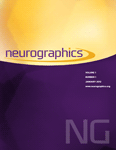
Imaging of Cerebral Palsy: A Primer for the Radiologist
Cerebral palsy is a complex medical condition characterized by a range of motor and postural abnormalities resulting from nonprogressive disruptions in early life. Several clinical risk factors, including prenatal causes, contribute to its complexity. Additionally, genetic factors have
been identified, further complicating the diagnosis.
Imaging manifestations of cerebral palsy are shaped by various factors, including the timing, extent, and nature of the underlying brain injury. Common imaging patterns observed on brain MRI include maldevelopment, predominant white matter injury, predominant gray matter injury, and other nonspecific patterns, such as brain atrophy and ventriculomegaly. White matter injury is the most prevalent, accounting for approximately 50% of cases.
Learning Objective: This pictorial review aims to discuss the principal imaging patterns associated with cerebral palsy, describe their characteristics, and differentiate them from conditions that may resemble cerebral palsy (referred to as “mimics”).
Imaging manifestations of cerebral palsy are shaped by various factors, including the timing, extent, and nature of the underlying brain injury. Common imaging patterns observed on brain MRI include maldevelopment, predominant white matter injury, predominant gray matter injury, and other nonspecific patterns, such as brain atrophy and ventriculomegaly. White matter injury is the most prevalent, accounting for approximately 50% of cases.
Learning Objective: This pictorial review aims to discuss the principal imaging patterns associated with cerebral palsy, describe their characteristics, and differentiate them from conditions that may resemble cerebral palsy (referred to as “mimics”).
Keywords: AIS = arterial ischemic stroke; BGT = basal ganglia‐thalamus; CP = cerebral palsy; DMV = deep medullary veins; HII = hypoxic-ischemic injury; NICU = neonatal intensive care unit; PVHI = periventricular hemorrhagic infarct; PVL = periventricular leukomalacia; WMI = white matter injury
Document Type: Research Article
Publication date: 01 April 2025
- Access Key
- Free content
- Partial Free content
- New content
- Open access content
- Partial Open access content
- Subscribed content
- Partial Subscribed content
- Free trial content